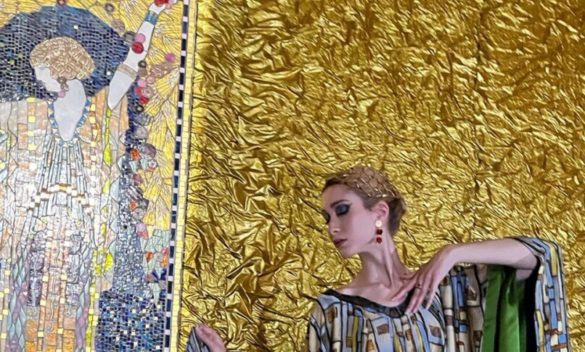Restaurata la “Pupa del Capo”: Mosaic at Morello bakery in Palermo market restored to its original splendor.

Confcommercio Palermo enthusiastically supported the project “La Pupa si ricrea 1924/2024”, in which the Salvare Palermo foundation honored the famous Liberty mosaic of the Capo Market with the image of Demetra. Through the recovery of models of our flourishing and recognized roots, we want to give an example of extraordinary creative and entrepreneurial strength. It is our precise commitment to translate the beauty that surrounds us into economic value. The President of Confcommercio Palermo, Patrizia Di Dio, stated this at the presentation event at Palazzo Sant’Elia of the so-called “Pupa del Capo”, the special Demetra which has found new life after restoration, thanks also to the reproduction of the dress and precious jewels specially made by two Palermo companies.
The project was promoted by the Sant’Elia Foundation in collaboration with Salvare Palermo. The female figure at the center of the initiative is depicted in one of the three panels that were an integral part of the architectural layout of the exterior front of the Panificio Morello, on the ground floor of Palazzo Serenario, in the historic Capo market, from where it was detached for restoration and better preservation at Palazzo Ajutamicristo. The project included the preview presentation of the “Cunto for Demetra” video performance by Salvo Piparo and the reproduction of the dress and jewels of the “Pupa” by Roberta Barraja and Laura Plaja.
The “Pupa del Capo,” symbol of the Palermo Liberty exhibition – The Golden Age, is temporarily exhibited at Palazzo Sant’Elia with a special immersive setup curated by architect Laura Galvano. The mosaic artwork represents a unique example of the amalgamation of refined art and popular culture characteristic of Palermo Liberty. The panels, of extraordinary beauty and with excellent technical, material, and aesthetic quality, are made with vitreous paste tesserae, partly painted with a layer of enamel and partly transparent, revealing the background in gold leaf. With a detailed dress, as well as her hairstyle, the “Pupa” is adorned with jewels and surrounded by ears of wheat and flowers, evoking the ancient cult of Demetra and the symbolism of fertility and abundance, closely connected to the very function of baking, with a possible resemblance to the young Vincenza Morello, who had married her cousin Salvatore, the owner of the bakery.
The author of the artwork, created in the very early 1920s, is unknown. According to some scholars, the work could be attributed to Salvatore Gregorietti or, within the Palermo panorama, to an artist from Pietro Bevilacqua’s workshop. In 1991, the panel was declared of historical-artistic interest by an assessorial decree, and in 2015, another assessorial decree recognized the historical, artistic, and ethnoanthropological interest of the entire workshop, to which the Palermo Chamber of Commerce had awarded a gold plaque in 2004, as a heritage of the city not only economic but, above all, cultural. After part of Palazzo Serenario collapsed, where the workshop is located on the ground floor, the three panels were detached from the facade and temporarily transferred to Palazzo Ajutamicristo, headquarters of the Superintendency for Cultural and Environmental Heritage of Palermo, where they have been exhibited since 2016. The restoration was carried out by Franco Fazzio and was curated by the Superintendency with the Salvare Palermo Foundation, thanks to the contribution of various sponsors.
The “Pupa” and its relationship with the people of the Capo market are dedicated to “Cunto for Demetra”, composed and performed by Salvo Piparo. For the Palermo Liberty exhibition – The Golden Age, the story became a video performance filmed at Palazzo Sant’Elia, within the immersive room curated by Laura Galvano. This video installation will enrich the exhibition until May 30, 2024, the closing date of the exhibition. The “La pupa si ricrea” project was born from an idea of the late past-president of the Salvare Palermo Foundation, Rosanna Pirajno, and aims to recreate, through in-depth research, the reproduction of the dress and jewels of the “Pupa”, and then exhibit it on a traveling tour in the most significant places in the city. Costume scholar Roberta Barraja and jewelry designer Laura Plaja created the dress on a 1:2 scale, perfectly replicating that of the “Pupa”, accompanied by the reproduction, also in scale, of the jewels that adorn her.
Restaurata la «Pupa del Capo»: torna all’originario splendore il mosaico liberty del panificio Morello nello storico mercato di Palermo
Sicilian news
Tutte le Notizie in Italiano
SIGDS